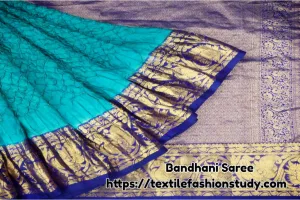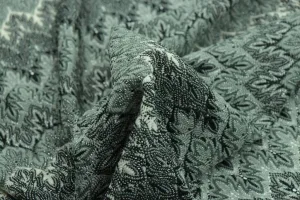Table of Contents
Jute Yarn
Jute fiber is the golden fiber. This fiber is generally used for manufacturing different types of environmentally friendly products. However, the demands for jute goods are increasing rapidly day by day. Therefore, lots of jute mills are established to satisfy the present requirement of jute goods. So, one should have knowledge about the processing lineup of jute products manufacturing.
Two types of jute mills are generally established: one type produces yarn only, and others manufacture both yarn and finished goods (Hessian, Sacking, or CBC). However, I would like to give a concept about the spinning unit, which is started from batching unit to the winding unit.
Flow Chart Of Jute Yarn Spinning Process
The following is the flow chart of the jute manufacturing process. They are-
Batching
↓
Carding
↓
Drawing
↓
Spinning
↓
Winding
Now, I like to illustrate details of each manufacturing stage of jute manufacturing.
Batching
Batching is the first section of the spinning division. Firstly, raw jute is entered in this section, which is processed here with the help of a softener or spreader machine. After that, the emulsion is applied to jute by this machine. This emulsion is basically a combination of JBO, water, and an emulsifier. Then, jute fiber is placed for pilling.
Purpose of batch section:
- To produce qualified yarn.
- To control the batch value.
Carding
Carding is the second section of jute spinning. Additionally, the drawing and carding section is combined called as preparing section in the mill. Moreover, carding is called the heart of spinning. In fact, the main objects of carding are to produce straight and parallel fiber, to remove dust and small fiber.
Two types of carding machines are used. They are-
- Breaker card: Firstly, breaker card is used to produce sliver roll to facilities next process. Then, long jute is feed in the feeding side of the breaker card. In breaker card, 32 lbs are feed within 1 clock length.
- Finisher card: Secondly, finisher card is used to make more parallel the fibers. It is generally used to select a batch for produce selected count. Two types of finisher card are availabl. One is half circular another is full circular machine.
Draw Frame
Draw frame is used to reduce weight per unit length. By using a drawing roller, the length of the finisher role sliver is elongated. The setting of the drawing unit is varying for CBC, Hessian, and Sacking units. Normally, 1st drawing, 2nd drawing, and 3rd drawing are used for CBC and Hessian. On the other hand, 1st drawing and finisher drawing are used for the Sacking Weft unit.
Spinning
A spinning frame is used to produce yarn from a drawn sliver. Sliver is fed to the drafting zone and twisting is done by the flyer. Twisted yarn is worned on the bobbin. Generally, two types of the draft are used-
- Apron draft
- Slip draft
The warp spinning frame (4.25”) contains 100 spindles (CBC, Hessian warp & weft, and Sacking Warp). 5.25” spinning frame is used for sacking the weft side, which contains 80 spindles.
Different count yarn is produced in the spinning frame. Following are the range of yarn count:
- 3.5-6 lbs/spyndle is for fine yarn.
- 6.5-8.5 lbs/spyndle is for CBC yarn.
- 7-9 lbs/spyndle is for hessian warp yarn.
- 7-12 lbs/spyndle is for hessian weft yarn.
- 8-10 lbs/spyndle is for sacking warp yarn.
- 20-40 lbs/spyndle is for sacking weft yarn.
Winding
Winding is the last section of jute spinning. Two types of winding are used. They are-
- Cop Winding (produce weft yarn)
- Spool or Roll Winding (produce warp yarn).
Above all. after the winding section, twin yarn is produced. However, spool and cop are delivered into the weaving section to produce finished jute goods.
So, that’s the short concept about jute spinning.





